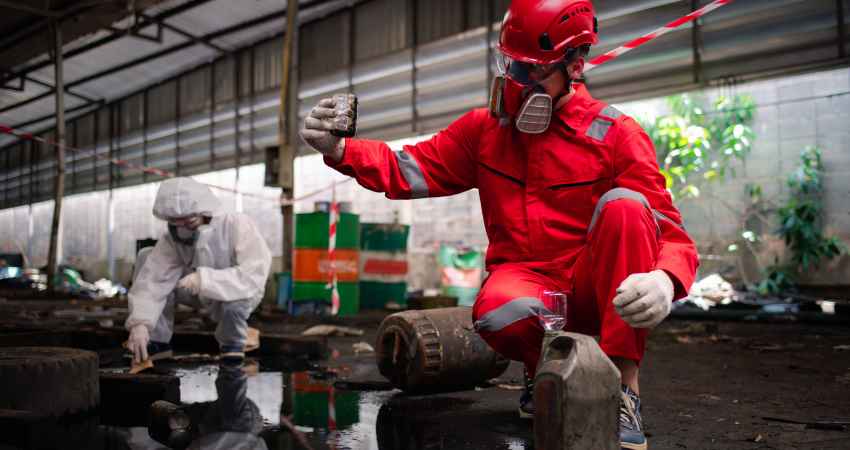
HAZARDOUS WASTE
The requirements of Dubai Municipality apply to all companies generating, storing or disposing of hazardous in the United Arab Emirates. Hazardous waste may be produced as by-products of manufacturing or simply discarded after a commercial cleaning. Hazardous waste producers may include: large industrial manufacturers, hospitals, oil refineries, auto repair shops, photo processing centres, exterminators, dry cleaners and electroplating companies and many more.
The EPA considers waste to be “hazardous” if it exhibits one or more of the following characteristics:
- Ignitability – Can it catch on fire?
- Reactivity – Might a chemical reaction occur from contact with other waste?
- Corrosivity – Will it destroy or damage other compounds it contacts?
- Toxicity – Can it poison living organisms?
They have come up with a precise list of components and levels that define “hazardous waste,” which your company needs to understand in order to properly dispose of waste in accordance with the law.
In addition to substances that meet the EPA characteristics, solid wastes are deemed hazardous if they are specifically defined by the EPA at 40 CFR 261. The EPA lists are divided into groups based on the type of trade that produces the waste. Some of the hazardous substances include:
- Used solvents
- Dioxin-bearing wastes
- Multisource leachate
- Wastes from wood preservation
- Wastewater treatment sludge
As in most areas of the law, ignorance is no excuse; Florida regulations make it clear that hazardous waste generators must know the content of their waste and manage it accordingly.
A waste generator must make several determinations:
- Is the waste a “solid waste” under the RCRA? Despite how it sounds, “solid waste” can be a solid, liquid, or a mix, so long as it will no long be used for its intended purpose or must be reclaimed before reuse.
- Is the solid waste hazardous? The EPA excludes some solid waste, defines some waste as hazardous, and outlines characteristics that may deem other waste as hazardous.
- How should the waste be transported, handled, or disposed of in accordance with the regulations?
Our laboratory works with clients in Dubai, United Arab Emirates to make these determinations. We understand how important it is for local businesses to make sure that waste and by-products are being managed properly.
Toxicity Characteristic Leaching Procedure for Hazardous Waste Management
The EPA’s regulations require that the Toxicity Characteristic Leaching Procedure (TCLP) be used to determine the toxicity of waste. TCLP determines the ability of contaminants to move through the soil or groundwater or react with solid waste.
TCLP analysis of a waste sample is a multi-step process that involves:
- Separating liquids from solids
- Reducing the particle size of solid material
- Extracting solids with an acidic fluid
Separating liquid waste from the separated solid waste to be analysed.

